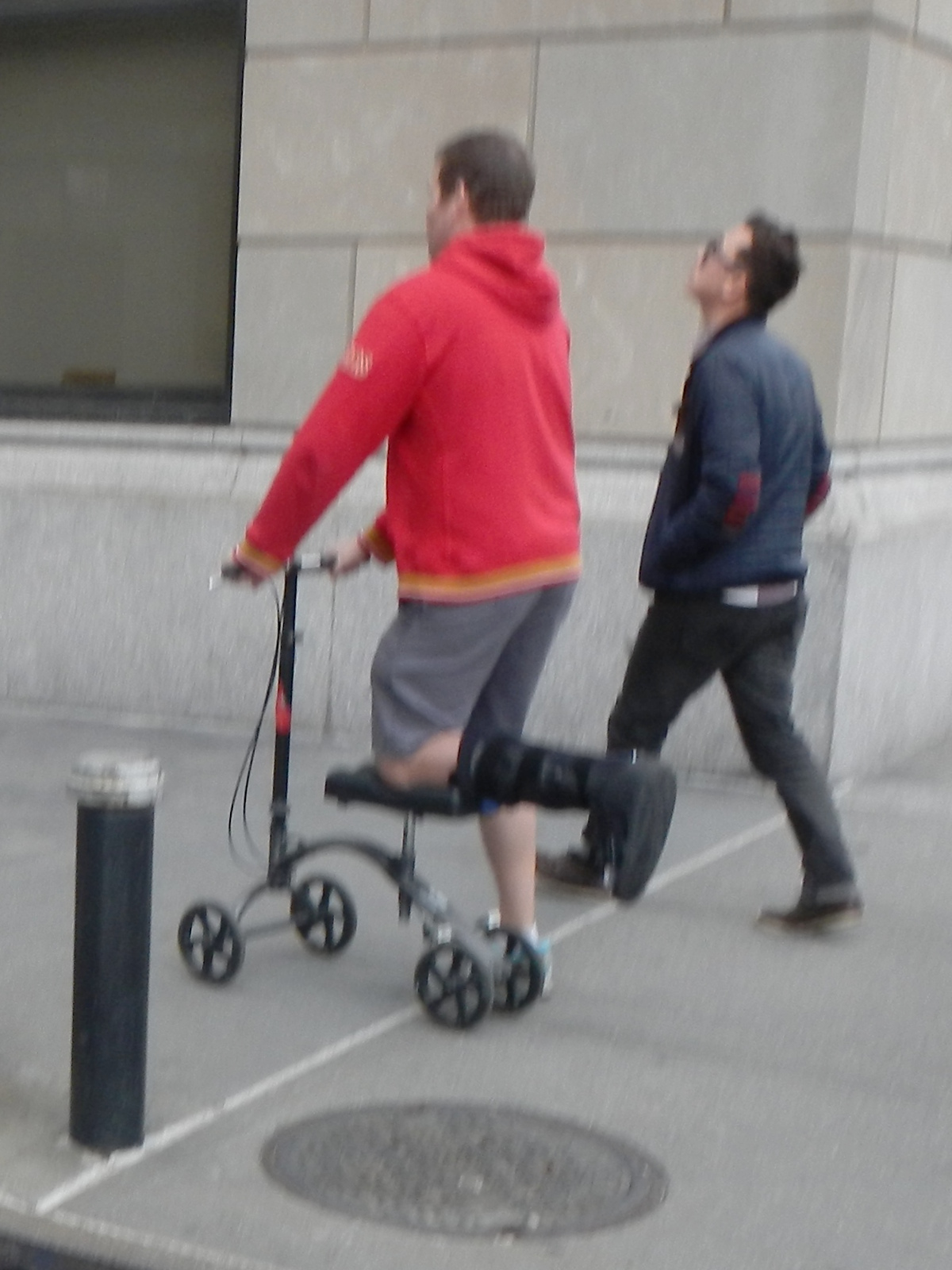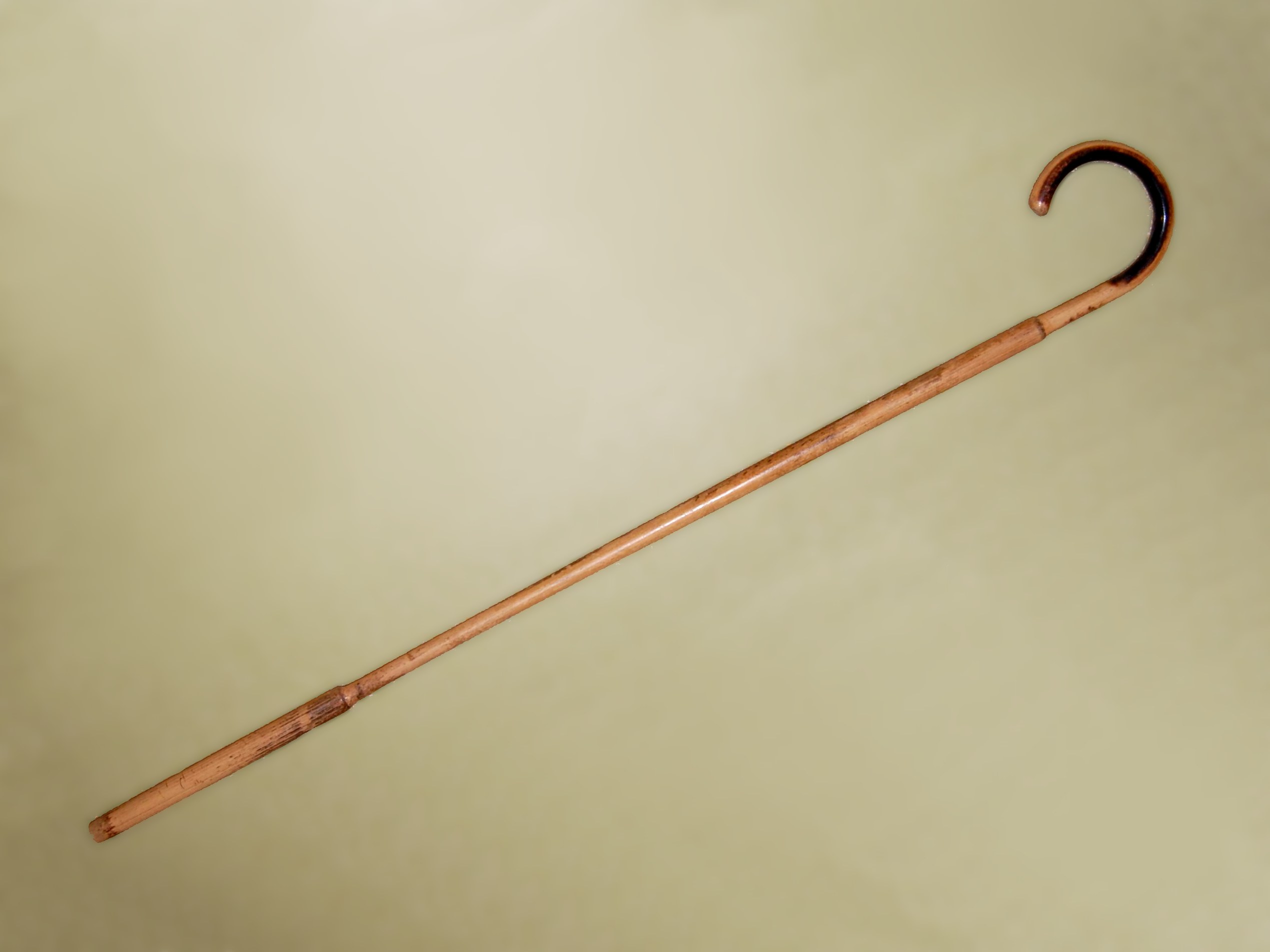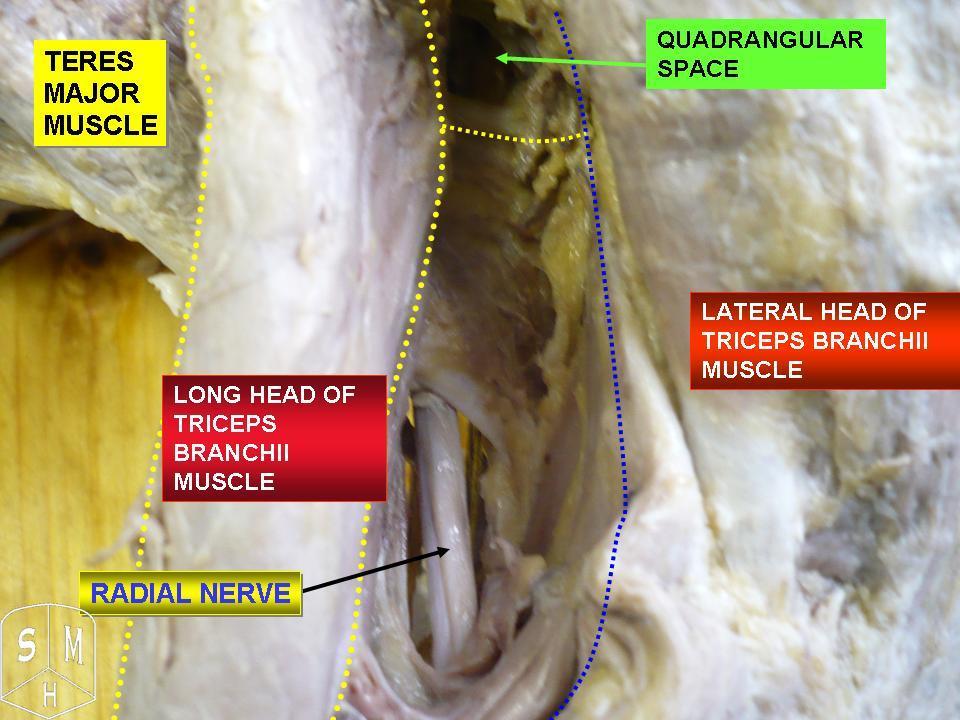|
Crutch
A crutch is a mobility aid that transfers weight from the legs to the upper body. It is often used by people who cannot use their legs to support their weight, for reasons ranging from short-term injuries to lifelong disabilities. History Crutches were used in ancient Egypt. In 1917, Emile Schlick patented the first commercially produced crutch; the design consisted of a walking stick with an upper arm support. Later, A.R. Lofstrand Jr. developed the first crutches with a height-adjustable feature. Over time, the design of crutches has not changed much, and the classic design continues to be the most commonly used. Types There are several types of crutches: Underarm or axillary Axillary crutches are used by placing the pad against the ribcage beneath the armpit and holding the grip, which is below and parallel to the pad. They are usually used to provide support for patients who have temporary restriction on ambulation.Taylor, C. R., Lillis, C., LeMone, P., Lynn, P. (2011) F ... [...More Info...] [...Related Items...] OR: [Wikipedia] [Google] [Baidu] |
Mobility Aid
A mobility aid is a device designed to assist walking or otherwise improve the mobility of people with a mobility impairment. There are various walking aids which can help people with impaired ability to walk, and wheelchairs or mobility scooters for more severe disability or longer journeys which would otherwise be undertaken on foot. For people who are blind or visually impaired the white cane and guide dog have a long history of use. Other aids can help with mobility or transfer within a building or where there are changes of level. Traditionally the phrase "mobility aid" has applied mainly to low technology mechanical devices. The term also appears in government documents, for example dealing with tax concessions of various kinds. It refers to those devices whose use enables a freedom of movement similar to that of unassisted walking or standing up from a chair. Technical advances can be expected to increase the scope of these devices considerably, for example by use of sen ... [...More Info...] [...Related Items...] OR: [Wikipedia] [Google] [Baidu] |
Knee Scooter
A knee scooter or knee walker is a two, three or four-wheeled alternative to crutches or a traditional walker as an ambulation aid. It is known by many other names, such as knee coaster, knee cruiser, knee caddy, orthopaedic scooter, or leg walker. Over the years it has taken on many forms, from small-wheeled devices suitable for indoor use to larger sturdier units capable of use outside on grass or paved surfaces. Today’s version is usually a lightweight, foldable design that, with the knee flexed, supports the shin of the unusable limb. The opposite foot makes contact with the floor or ground, providing propulsion. Operation The objective of the scooter is to create a safe, comfortable, and easy-to-maneuver alternative to the traditional crutch. Prior to its introduction, those experiencing foot surgery, bunionectomies, gout, below the knee amputations, diabetic ulcers and wounds, as well as foot sprains or fractures, had no choice but to limit activity during rehabilita ... [...More Info...] [...Related Items...] OR: [Wikipedia] [Google] [Baidu] |
Cerebral Palsy
Cerebral palsy (CP) is a group of movement disorders that appear in early childhood. Signs and symptoms vary among people and over time, but include poor coordination, stiff muscles, weak muscles, and tremors. There may be problems with sensation, vision, hearing, and speaking. Often, babies with cerebral palsy do not roll over, sit, crawl or walk as early as other children of their age. Other symptoms include seizures and problems with thinking or reasoning, which each occur in about one-third of people with CP. While symptoms may get more noticeable over the first few years of life, underlying problems do not worsen over time. Cerebral palsy is caused by abnormal development or damage to the parts of the brain that control movement, balance, and posture. Most often, the problems occur during pregnancy, but they may also occur during childbirth or shortly after birth. Often, the cause is unknown. Risk factors include preterm birth, being a twin, certain infections during pr ... [...More Info...] [...Related Items...] OR: [Wikipedia] [Google] [Baidu] |
Walking Stick
A walking stick or walking cane is a device used primarily to aid walking, provide postural stability or support, or assist in maintaining a good posture. Some designs also serve as a fashion accessory, or are used for self-defense. Walking sticks come in many shapes and sizes and some have become collector's items. People with disabilities may use some kinds of walking sticks as a crutch but a walking cane is not designed for full weight support and is instead designed to help with balance. The walking stick has also historically been known to be used as a self defensive weapon and may conceal a knife or sword – as in a swordstick or swordcane. Hikers use walking sticks, also known as trekking poles, pilgrim's staffs, hiking poles, or hiking sticks, for a wide variety of purposes: as a support when going uphill or as a brake when going downhill; as a balance point when crossing streams, swamps, or other rough terrain; to feel for obstacles in the path; to test mud and wat ... [...More Info...] [...Related Items...] OR: [Wikipedia] [Google] [Baidu] |
Radial Nerve
The radial nerve is a nerve in the human body that supplies the posterior portion of the upper limb. It innervates the medial and lateral heads of the triceps brachii muscle of the arm, as well as all 12 muscles in the posterior osteofascial compartment of the forearm and the associated joints and overlying skin. It originates from the brachial plexus, carrying fibers from the ventral roots of spinal nerves C5, C6, C7, C8 & T1. The radial nerve and its branches provide motor innervation to the dorsal arm muscles (the triceps brachii and the anconeus) and the extrinsic extensors of the wrists and hands; it also provides cutaneous sensory innervation to most of the back of the hand, except for the back of the little finger and adjacent half of the ring finger (which are innervated by the ulnar nerve). The radial nerve divides into a deep branch, which becomes the posterior interosseous nerve, and a superficial branch, which goes on to innervate the dorsum (back) of the hand. Th ... [...More Info...] [...Related Items...] OR: [Wikipedia] [Google] [Baidu] |
Wheelchair
A wheelchair is a chair with wheels, used when walking is difficult or impossible due to illness, injury, problems related to old age, or disability. These can include spinal cord injuries ( paraplegia, hemiplegia, and quadriplegia), cerebral palsy, brain injury, osteogenesis imperfecta, motor neurone disease, multiple sclerosis, muscular dystrophy, spina bifida, and more. Wheelchairs come in a wide variety of formats to meet the specific needs of their users. They may include specialized seating adaptions, individualized controls, and may be specific to particular activities, as seen with sports wheelchairs and beach wheelchairs. The most widely recognized distinction is between motorized wheelchairs, where propulsion is provided by batteries and electric motors, and manual wheelchairs, where the propulsive force is provided either by the wheelchair user or occupant pushing the wheelchair by hand ("self-propelled"), by an attendant pushing from the rear using the handle( ... [...More Info...] [...Related Items...] OR: [Wikipedia] [Google] [Baidu] |
Assistive Technology
Assistive technology (AT) is a term for assistive, adaptive, and rehabilitative devices for people with disabilities and the elderly. Disabled people often have difficulty performing activities of daily living (ADLs) independently, or even with assistance. ADLs are self-care activities that include toileting, mobility (ambulation), eating, bathing, dressing, grooming, and personal device care. Assistive technology can ameliorate the effects of disabilities that limit the ability to perform ADLs. Assistive technology promotes greater independence by enabling people to perform tasks they were formerly unable to accomplish, or had great difficulty accomplishing, by providing enhancements to, or changing methods of interacting with, the technology needed to accomplish such tasks. For example, wheelchairs provide independent mobility for those who cannot walk, while assistive eating devices can enable people who cannot feed themselves to do so. Due to assistive technology, disabled pe ... [...More Info...] [...Related Items...] OR: [Wikipedia] [Google] [Baidu] |
PinnacleHealth System
UPMC Central Pa, part of the University of Pittsburgh Medical Center (UPMC) system as of September 1, 2017, is a healthcare provider in central Pennsylvania and surrounding rural communities. It has more than two thousand nine hundred physicians and allied health professionals and approximately eleven thousand employees serve a 10-county area at outpatient facilities and seven acute care hospitals with over 1,360 licensed beds: UPMC Harrisburg, UPMC Community Osteopathic, UPMC West Shore, UPMC Carlisle, UPMC Hanover, UPMC Lititz, and UPMC Memorial. The not-for-profit system anticipates providing $17 million in community benefits and caring for more than 1.2 million residents in FY 2018. List of UPMC Central Pa facilities On September 11, 2017, UPMC Pinnacle unveiled its new branding since officially merging with UPMC. Location of Hospitals *UPMC Carlisle in Carlisle, Pennsylvania *UPMC Community Osteopathic in Harrisburg, Pennsylvania *UPMC Hanover in Hanover, Pennsylvania *U ... [...More Info...] [...Related Items...] OR: [Wikipedia] [Google] [Baidu] |
Cane Holder
Cane or caning may refer to: *Walking stick or walking cane, a device used primarily to aid walking *Assistive cane, a walking stick used as a mobility aid for better balance *White cane, a mobility or safety device used by many people who are blind or visually impaired * An implement used in caning, a form of corporal punishment * Sugarcane, commonly known as "Cane" Plants *Cane (grass), tall perennial grasses with woody stalks **''Arundo'', Old World canes **''Arundinaria'', New World canes **''Arundo donax'', Giant cane **'' Arundinaria appalachiana'', Hill cane *Cane (vine), the part of a grapevine that supports the new growth * Cane ash, the white ash tree, ''Fraxinus americana'' * Cane cholla, ''Cylindropuntia imbricata'', a cactus Animals *Cane beetle, ''Dermolepida albohirtum'', a pest of sugarcane, native to Australia * Cane Corso, an Italian Mastiff * Cane mouse, ''Zygodontomys'', a rodent from Central and South America *Cane rat, ''Thryonomys'', a large rodent nat ... [...More Info...] [...Related Items...] OR: [Wikipedia] [Google] [Baidu] |
Walker (mobility)
A walker (North American English) or walking frame (British English) is a device that gives support to maintain balance or stability while walking, most commonly due to age-related mobility disability, including frailty. Another common equivalent term for a walker is a Zimmer (frame), a genericised trademark from Zimmer Biomet, a major manufacturer of such devices and joint replacement parts. Walking frames have two front wheels, and there are also wheeled walkers available having three or four wheels, also known as rollators. Walkers started appearing in the early 1950s. The first US patent was awarded in 1953 to William Cribbes Robb, of Stretford, UK, for a device called "walking aid", which had been filed with the British patent office in August 1949. Two variants with wheels were both awarded US patents in May 1957, and the first non-wheeled design that was called a "walker" was patented in 1965 by Elmer F. Ries of Cincinnati, Ohio. The first walker to resemble modern walke ... [...More Info...] [...Related Items...] OR: [Wikipedia] [Google] [Baidu] |
Thermoplastic
A thermoplastic, or thermosoft plastic, is any plastic polymer material that becomes pliable or moldable at a certain elevated temperature and solidifies upon cooling. Most thermoplastics have a high molecular weight. The polymer chains associate by intermolecular forces, which weaken rapidly with increased temperature, yielding a viscous liquid. In this state, thermoplastics may be reshaped and are typically used to produce parts by various polymer processing techniques such as injection molding, compression molding, calendering, and extrusion. Thermoplastics differ from thermosetting polymers (or "thermosets"), which form irreversible chemical bonds during the curing process. Thermosets do not melt when heated, but typically decompose and do not reform upon cooling. Above its glass transition temperature and below its melting point, the physical properties of a thermoplastic change drastically without an associated phase change. Some thermoplastics do not fully crystallize ... [...More Info...] [...Related Items...] OR: [Wikipedia] [Google] [Baidu] |
Composite Material
A composite material (also called a composition material or shortened to composite, which is the common name) is a material which is produced from two or more constituent materials. These constituent materials have notably dissimilar chemical or physical properties and are merged to create a material with properties unlike the individual elements. Within the finished structure, the individual elements remain separate and distinct, distinguishing composites from mixtures and solid solutions. Typical engineered composite materials include: *Reinforced concrete and masonry *Composite wood such as plywood *Reinforced plastics, such as fibre-reinforced polymer or fiberglass *Ceramic matrix composites ( composite ceramic and metal matrices) *Metal matrix composites *and other advanced composite materials There are various reasons where new material can be favoured. Typical examples include materials which are less expensive, lighter, stronger or more durable when compared with commo ... [...More Info...] [...Related Items...] OR: [Wikipedia] [Google] [Baidu] |










